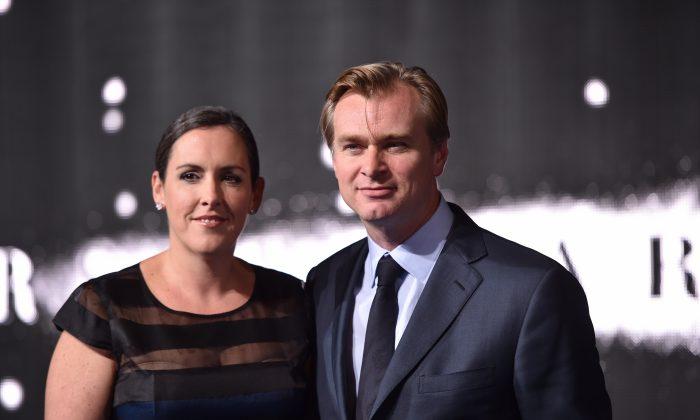Sending out tweets to an exoplanet 22 light years away and the ever increasing role of science and technology in our lives were some of the topics featured at the Subtle Technologies Symposium last weekend in Toronto at the Ryerson University campus downtown.
This June, the annual event that went into its 16th year, picked up from last year’s topic on immortality and gathered scientists, artists, and filmmakers from around North America to talk about the recent advances in the field of technology, as well as art work merging with science.
Tweets in Space
San Francisco-based independent artist, Scott Kildall, has a vision to combine science and art and involve public participation.
He partnered with Nathaniel Stern, an art and design professor, for their first project which involved the launch of a Wikipedia Art page. The idea was to upload art on a Wikipedia page that anyone would be able to edit. After the page was created, however, it was taken down by Wikipedia after 15 hours of its inception.
The two artists then turned their attention to another project: Tweets in space. Under this project, tweets with the hashtag #tweetsinspace were collected on Sept. 21, 2012 and were sent out as messages to aliens later that year in November.
The two artists rented a high amplitude and high frequency radio telescope and the tweets were transmitted via analog and digital signals. They chose to send the tweets to exoplanet GJ667Cc, a planet 22 light years away from us, said to be the closest planet that most likely supports life form.
“I think a lot of people have fascinations with extraterrestrials and aliens in space,” Kildall said at the Subtle Technologies talk. “There’s no question that it’s out there and there’s no question that eventually we’ll have some sort of contact.
“Sending Twitter messages is a way of getting people to participate in a very easy way and a very democratic way,” he said. And people could even do so with an anonymous Twitter account.
According to Kildall, it could take all of a thousand years to have a conversation with lifeforms outside our planet, but people like to think of time in terms of their immediate lives, so it was important to introduce the idea that if one day we can extend our lives, we can still participate and witness this ongoing conversation.
What stood out most about the project for Kildall was the content of the messages. Some of the messages were simple greetings and references to pop culture, but many were focused on asking the extraterrestrials to pardon the state of the human society and apologizing for our behaviour.
Kildall said people also sent out jokes asking aliens “please don’t eat us.”
“If anyone out there reads this, please don’t judge humanity by our wars, carelessness, & reality tv, but by moments of good,” wrote Twitter user @ohlauren on September 21.
“Hey we just found you and this is crazy but we’re from Earth. Call us, maybe?” wrote 2020@Astro.
“Saying that we’ve really messed up a lot of times in history, but we at heart are good species ... almost that idea of redemption, forgiveness was expressed,” Kildall said.
Assuming an immediate response from the aliens, Kildall said, a reply from aliens would arrive in 44 years, considering the transmission time. While acknowledging that the chance of receiving a reply is slim, Kildall said the thought of communicating with alienist sparks people’s imagination.
With advances in science and technology, it’s also likely humans will find new, more effective ways of communicating with aliens in the near future, Kildall said.
Creating Superhumans
The symposium also featured the screening of the documentary The Singularity. Singularity refers to the point in time when computer intelligence exceeds human intelligence.
Producer Doug Wolens, along with others, commented on some questions raised after the film from the audience.
Some scientists and policy makers were confident that humans are still in control of machines and that we wouldn’t let technology reach a stage where it could potentially take the reigns and cause us harm. Some others argued however that we’re heading in the direction of technology holding a dangerous grip on us.
Noted futurist and Google’s Director of Engineering, Ray Kurzweil, said that technology is moving at an exponential pace towards a singularity, a term coined by Kurzweil in his bestselling book The Singularity Is Near.
For example, imagine microchips floating inside one’s blood stream, being able to detect any abnormality in the human body or wound and repair it from the inside out.
“It’s awesome that we try to figure it out, but at the same time have some humility and go ‘we won’t know it till we get there’,” said Wolens. It took the Chicago native some 10 years to compile the documentary.
Questions about pros and cons of using advanced technology were also raised by thinkers from around the world.
Bill McKibben, author and environmentalist who was also featured in the film, gave the following example to the audience: A couple wants to conceive a child and tinkers with the DNA to make the child taller and smarter.
Three years down the road the couple wants to have another child, but now technology is better, they again want to choose which genes are expressed in the child’s makeup and want the child to be even smarter, better looking, etc. Will this mean that the first child is now running Windows 95?
Based on his interviews with scientists, futurists, and philosophers for over a decade, Wolens concluded: “There are certainly forces that are scientific or technological that we might not be able to stop.” He noted, however, that issues such as corporate and marketing influence can still be contended with.





Friends Read Free